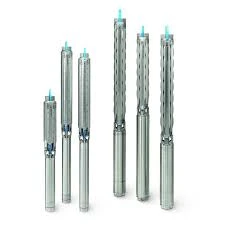డిసెం . 30, 2024 08:22 Back to list
submersible pump drawing
Understanding Submersible Pump Drawings A Comprehensive Overview
Submersible pumps are critical components in numerous applications, ranging from groundwater extraction to sewage disposal. These pumps, designed to operate underwater, have specific characteristics that differentiate them from traditional pumps. To effectively utilize submersible pumps, it's crucial to understand the detailed drawings that illustrate their design, functionality, and assembly. This article delves into the significance of submersible pump drawings, their components, and how to interpret them.
What is a Submersible Pump?
A submersible pump is a type of pump that is submerged underwater and is utilized to move fluids by converting rotational energy into kinetic energy. These pumps are encapsulated in a waterproof housing, which allows them to function efficiently while submerged. The prime advantages of submersible pumps include their ability to handle high flow rates, their efficiency in pumping water from deep wells, and their compact size, making them ideal for applications in limited spaces.
The Importance of Drawings
Pump drawings serve as blueprints for manufacturers, engineers, and technicians. These drawings provide a visual representation and crucial information regarding the pump's operating principles, structural components, assembly guidelines, and maintenance requirements. A well-detailed drawing can simplify the design process, facilitate manufacturing, and ensure the reliability and performance of the pump.
Key Components Illustrated in Drawings
1. Pump Housing The external structure that protects the internal components from external factors. Drawings will highlight materials used, dimensions, and design features that contribute to durability and efficiency.
2. Impeller A rotating part that imparts energy to the fluid. The drawing will detail the impeller's design, which is critical for determining the flow rate and pressure the pump can achieve.
3. Motor Typically located at the top of the pump or integrated into the housing, the motor powers the impeller. Drawings will include specifications regarding motor type, voltage, and operational parameters.
4. Electrical Wiring An essential aspect that ensures power reaches the motor safely. Drawings will detail wiring configurations and insulation specifications to prevent short circuits.
5. Suction Strainer Situated at the intake of the pump, this component prevents debris from entering the pump, which could lead to damage. Drawings will provide information regarding mesh size and materials.
submersible pump drawing

6. Discharge Port The exit point for the pumped fluid. Drawings will illustrate the size and orientation, which affect installation and flow dynamics.
Interpreting Submersible Pump Drawings
When analyzing submersible pump drawings, there are several elements to consider
- Scale and Dimensions Understanding the scale helps in realizing the actual size of the components. Accurate dimensions are crucial for ensuring that the pump fits within the intended space.
- Material Specifications Drawings often specify the materials used in the construction of the components based on their application (e.g., corrosion resistance, pressure tolerance).
- Assembly Instructions Detailed drawings may include step-by-step procedures for assembling the pump, which can be critical for maintenance and repairs.
- Annotations and Symbols Familiarity with industry-standard symbols can help interpret aspects of the drawings quickly. Annotations provide key insights into tolerances, finishes, and other critical manufacturing requirements.
Practical Applications
Submersible pumps are widely used in various sectors, including agriculture for irrigation, municipal systems for sewage removal, and industrial applications for processing fluids. Understanding the drawings allows engineers and operators to select the right pump for specific applications, ensuring efficiency and longevity in operations.
Conclusion
Submersible pump drawings are indispensable tools that encapsulate critical information necessary for the effective use and maintenance of these pumps. By understanding the components and learning how to interpret drawings, engineers and technicians can enhance the performance of submersible pumps, leading to improved operational efficiency across a wide range of applications. As technology advances, the complexity and precision of these drawings will continue to evolve, further emphasizing the importance of detailed designs in modern engineering.
-
submersible-sump-pump-auto-drainage-for-crawlspaces
NewsAug.22,2025
-
solar-powered-stainless-steel-submersible-well-pump-setup
NewsAug.22,2025
-
stainless-steel-well-pump-flow-rate-optimization
NewsAug.22,2025
-
water-filled-submersible-pump-fish-farm-oxygenation
NewsAug.22,2025
-
submersible-pump-in-aquaculture-and-fish-farming
NewsAug.22,2025
-
deep-well-submersible-pump-for-drought-areas
NewsAug.22,2025
-
 submersible-sump-pump-auto-drainage-for-crawlspacesCrawlspaces, those narrow areas beneath homes, are prone to water accumulation due to leaks, groundwDetail
submersible-sump-pump-auto-drainage-for-crawlspacesCrawlspaces, those narrow areas beneath homes, are prone to water accumulation due to leaks, groundwDetail -
 solar-powered-stainless-steel-submersible-well-pump-setupHarnessing solar energy to power stainless steel submersible well pumps is a sustainable and coDetail
solar-powered-stainless-steel-submersible-well-pump-setupHarnessing solar energy to power stainless steel submersible well pumps is a sustainable and coDetail -
 stainless-steel-well-pump-flow-rate-optimizationIn various applications like agriculture, domestic water supply, and industrial use, the flow rate oDetail
stainless-steel-well-pump-flow-rate-optimizationIn various applications like agriculture, domestic water supply, and industrial use, the flow rate oDetail
